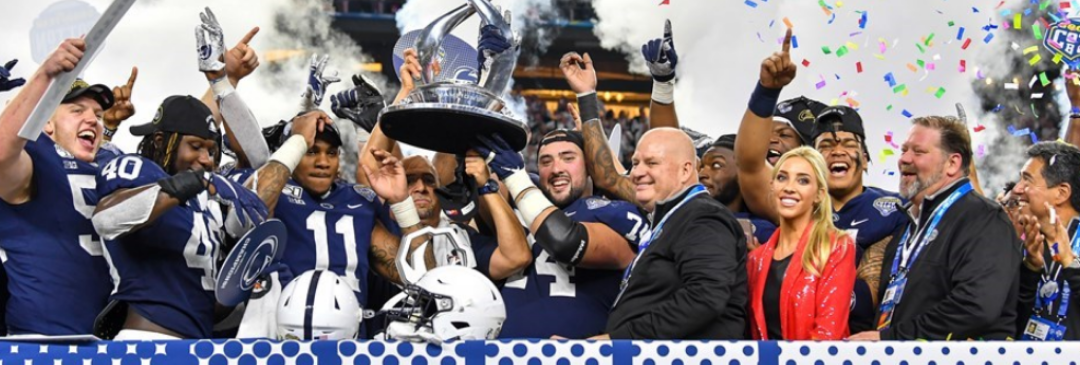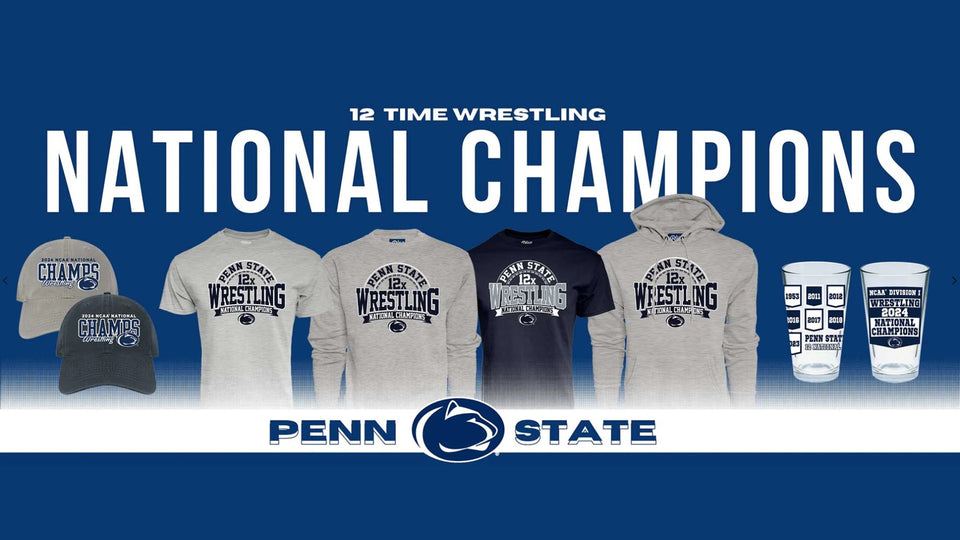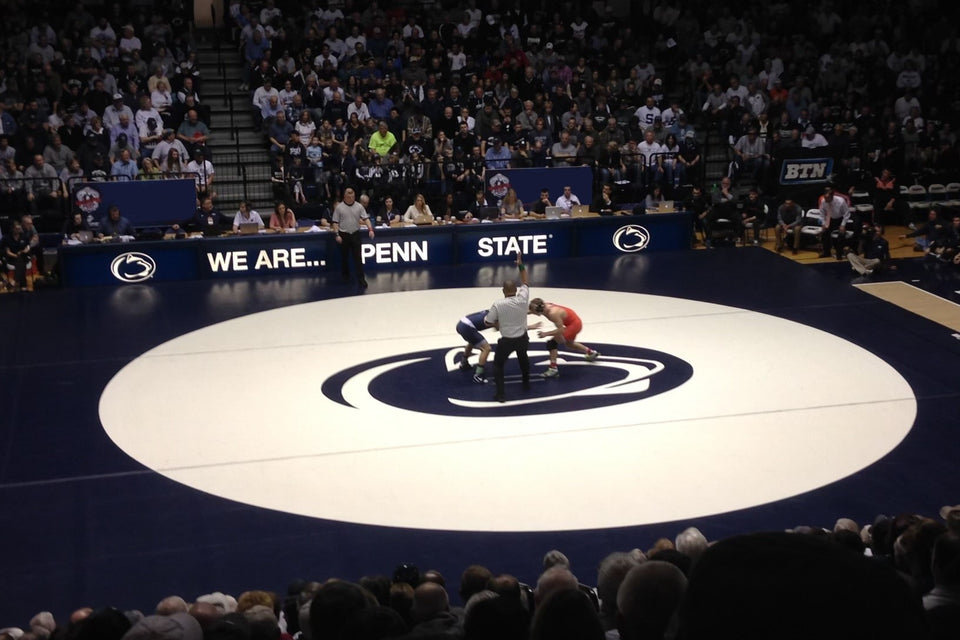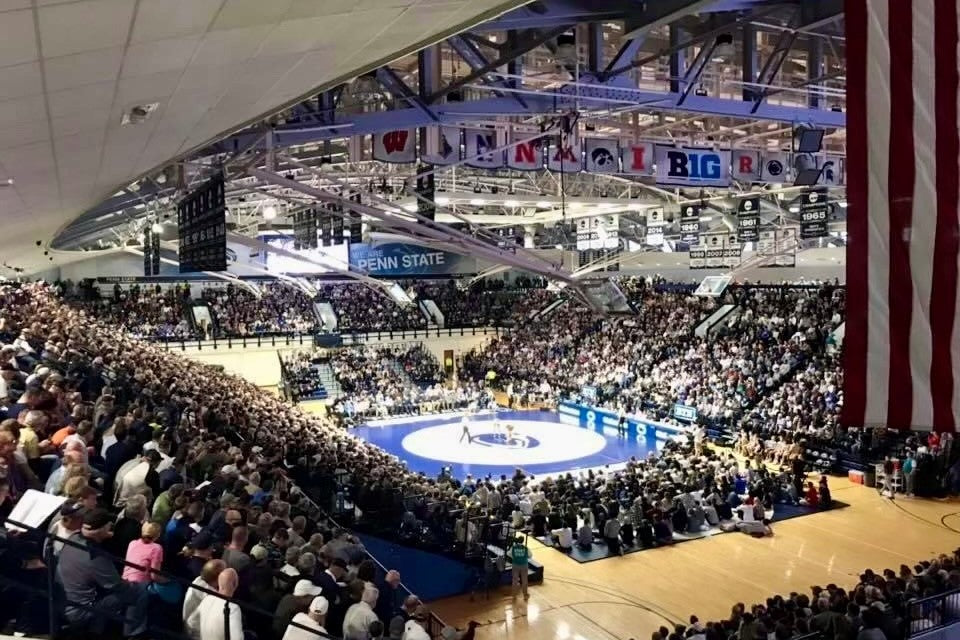
We Are
And what a game Parsons had! He tortured the Tigers with fourteen tackles, two sacks, two fumbles, and a quarterback hit that forced an interception. Fifth-year senior Garrett Taylor went out with a bang when he scooped up that errant toss and ran it fifteen yards for a touchdown. Micah Parsons took home the defensive MVP honor to add to his already impressive collection that includes BigTen Linebacker of the Year and All-American.
On offense, the MVP award went to a well-deserving Journey Brown, who finished with 202 yards, two touchdowns, and an average of 12.6 yards per carry. Who didn’t love watching him stiff arm, shrug off, and jump over multiple defenders before crashing into the end zone?!
Journey Brown had a huge game and immediately gave “kudos” to his teammates on offense. He’s eligible to leave school early for the NFL draft but isn’t considering doing so: “I got a lot of stuff I want to achieve,” Brown said. “I want to get my degree. I got to show people that I’m a student and an athlete, and I’m gonna do that.”
Goal-oriented Micah Parsons set his mind to earning to Cotton Bowl’s defensive MVP and then worked to achieve it. In appreciation of their mentorship, Parsons wanted to win the game for Cam Brown and Jan Johnson, who played their final game for Penn State.
The type of character displayed by two of our best players isn’t just a happy coincidence. Our program has a rich history of putting the most important things first. The 2019 Nittany Lions honored 1948 great, Wally Triplett, with a WT sticker on their helmets. Triplett and teammate Dennie Hoggard were the first African American players to ever play in the Cotton Bowl.
In 1946, when Miami University asked Penn State to leave Triplett and Hoggard at home, the team voted unanimously to cancel the game stating, “We play all or we play none.” The following year when the Nittany Lions were invited to play in the Cotton Bowl, it was Steve Suhey who reportedly put an end to all similar future discussions saying, “We are Penn State. There will be no meetings.”

In 2015, Wally visited Penn State. He met with the football team and led them in a round of the “We Are” cheer. He vocalized his love for the cheer and everything it represents. Some believe that the cheer came from the 1948 Cotton Bowl, but Penn State historian Lou Prato debunked that myth several years ago.
Though the “We Are” cheer may not have originated from Steve Suhey’s words as legend would have us believe, it’s all wrapped up together. To say “We Are Penn State” is to pay homage the unity of Wally Triplett’s Penn State team. It’s to remember the tenacity of the cheerleaders in the 70s and 80s who worked so hard for an inclusive and welcoming stadium cry. It’s to see yourself in the beautifully reflective “We Are” campus statue. And, it’s to appreciate the true culture of our Penn State family in the loyal support from Coach Franklin and the team of Jonathan Sutherland’s locs.
“We Are” is so much more than a stadium cheer. When we say “We Are Penn State” we mean every aspect of it. When we spot a fellow Penn Stater and shout “We Are,” we connect across our differences to that which unites us.
About the 1948 Cotton Bowl, Franklin said, “The history is significant. And I think you can make the argument it's not just those two guys. It's how the whole team and how the whole community kind of rallied behind those guys.”
When we cheer “We Are Penn State” we know that we have always been a whole team and a whole community that rallies behind one another, that nothing—not the NCAA, not the media, not the racist death threatening “fans,” not even the annoying social media couch coaches—can ever destroy this Nittany Nation. And with the largest alumni network in existence, we just might make this world a better place while we’re at it.
I’m already looking forward to next season, which looks brighter than ever. Until then it’s “For the future that we wait; Raise the song” and raise the cheer:
We Are...


